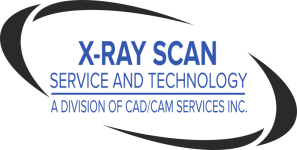X-Ray Film Scanners and Digitizers, X-Ray Film Scanning Services and Software
Strategy for Digital X-Ray Images
posted Aug-10-2015What’s the Best Strategy for Digital X-Ray Images?
Just as radiology has improved patient care, and radiography has improved industrial testing, so the Cloud can improve access to these (sometimes very large) images by providing a more effective platform through which to store, and share data. This article explores the Cloud strategies for digital x-ray images.
What do you do when you need to collaborate immediately on a very large image?
The Cloud allows radiologists and radiographers to store, share and connect more easily than ever before. Since many medical and industrial organizations work with large, complex images such as CT scans and X-Rays, the ability to store and share images on a cloud-based system can maximize efficiencies. Newer imaging devices often generate complex imagery with very large file sizes. The Cloud provides a platform that is capable of supporting very large image files. This is just one of the benefits organizations can expect when they adopt the Cloud.
Better decisions with fast, easy viewing of digital images and reports
Regardless of who you need to collaborate with, or where they’re located, the Cloud enables browser speed viewing of large digital images, without download, for faster, better decisions 24/7.
You can connect for efficiencies on the image owner’s side and added control on the collaborator’s side.
In fact, if expert projections are accurate, digital cloud technology will transform the field of radiology. In those institutions that are already using the Cloud for digital X-Ray images, we already see signs of this transformation, including changes in who does the work of reading images, and where and how it’s done.

Instead of storing images on local IT infrastructure and sharing images through physical means such as compact discs, cloud radiology allows storage and transmission of images through an off-site network of computer servers. This model makes it easier to back up files and access those files through multiple devices, without the fear of losing the data if an individual device is compromised.
What do medical professionals think?
Hospital managers are hopeful that these changes will reduce costs and improve quality of care. It may also mean that more hospitals will outsoure the reading of images to external networks of radiologists or other specialists. In theory, this model could mean that radiologists would be available 24/7, significatnly shortening the turnaround time on reading images. Additionally, local IT-personnel and equipment costs could be substantially reduced.
Radiologists wonder if this increased efficiency may mean increased competition, fewer scans and fewer radiology jobs. With this view in mind, a growing number of radiologists are banding together to form companies that offer cloud-based radiology services to hospitals.
Conclusion
An article this past February in Radiology Business stated that “Radiology appears to have reached a tipping point in its adoption of cloud computing, with economic and availability issues sending many applications to the cloud.” We agree. Digital radiology is here to stay, and the Cloud is rapidly becoming a ubiquitous part of digital radiology.

